Table of Contents
GameFi is a term you may have heard of recently, but you might not be aware of ‘What is GameFi?’ yet. GameFi is a term that has emerged from the intersection of two popular industries: gaming and decentralized finance (DeFi). At its core, GameFi is about creating a gaming ecosystem that rewards players with valuable GmeFi tokens, giving them real ownership of in-game assets and a stake in the game’s success.
Traditional gamers spend countless hours playing games without any real financial reward. However, GameFi aims to change that by allowing gamers to earn GameFi crypto or GameFi tokens that can be traded, staked, or even used to purchase real-world goods and services. This new concept opens up a world of opportunities for players, who can now enjoy their favorite games while earning real money.
GameFi is made possible by the underlying blockchain technology that enables decentralized and transparent transactions with GameFi tokens. By leveraging blockchain, GameFi games can be provably fair, and players can trust that their rewards are secured by smart contracts.
GameFi games often utilize play-to-earn mechanics, which means players can earn GameFi tokens by completing in-game tasks, achieving certain milestones, or contributing to the game’s overall growth. This creates a new type of player engagement and incentivization that traditional gaming is yet to provide.
So what is GameFi? GameFi combines gaming and decentralized finance (DeFi), and involves using blockchain technology and cryptocurrencies to create a gaming ecosystem that rewards players with tokens that have real-world value. GameFi games often feature play-to-earn mechanics, where players can earn GameFi tokens by completing in-game tasks or achieving certain goals.
These GameFi tokens can then be used for various purposes, including trading, staking, or even as a form of payment. GameFi is still a relatively new concept, but it has the potential to revolutionize the gaming industry by creating new streams of passive income for players and promoting the adoption of blockchain technology.
GameFi also creates a higher level of trust between players and game developers. Since blockchain technology makes it possible to create verifiable and tamper-proof records of in-game transactions, players can be sure that their rewards are secured by smart contracts. This removes the need for centralized intermediaries, such as game publishers, to handle in-game transactions, which can lead to a more efficient and transparent gaming experience.
Another important feature of GameFi is that it creates new revenue streams for both players and game developers. Players can earn GameFi tokens by completing in-game tasks or achieving certain goals, and these GameFi tokens are used as a form of payment. This means that players can enjoy the gaming experience while also monetizing their gaming skills.
So how does GameFi work? By employing blockchains, GameFi enables users to take part in gaming ecosystems, trade virtual goods, and earn incentives.
In GameFi, players can earn rewards through gameplay, such as completing tasks or achieving milestones, and these rewards are often paid out in the form of exclusive GameFi tokens or certain cryptocurrencies. These rewards can then be used to purchase further in-game assets, or they can be traded on cryptocurrency exchanges. GameFi platforms can also allow players to stake their GameFi tokens in various games, which allows them to earn a percentage of the game’s revenue.
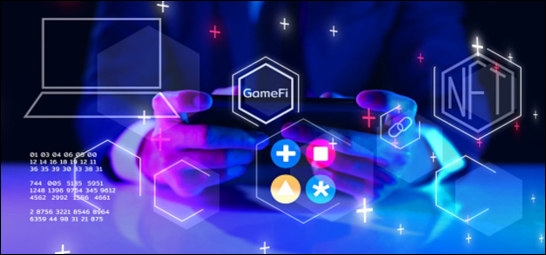
As mentioned above, GameFi works through blockchain technology, which allows for secure and transparent transactions between players and game developers. Blockchain technology also enables the creation of non-fungible tokens (NFTs) to represent virtual assets in the games, and their ownership can be verified on the blockchain. This creates a new ecosystem where players can earn and trade virtual assets with other players, increasing the ecosystem’s value.
So now that we know ‘what is GameFi?’ and ‘how does GameFi work?’, let’s find out what exclusive benefits GameFi games bring, shall we?
One of GameFi’s main advantages is that it allows players to earn GameFi crypto while playing games. This means that players can monetize their gaming skills and turn their hobby into a potential source of income.
By earning GameFi tokens, players can use their earnings to purchase virtual assets within the game and increase their in-game abilities. Players can also use their GameFi crypto earnings outside of the game to make purchases or exchange for other cryptocurrencies.
Another benefit of GameFi is that it allows for greater ownership and control over virtual assets within games. In traditional gaming models, players do not typically own the virtual assets acquired within the game. However, in GameFi, virtual assets are often created as non-fungible tokens (NFTs) on a blockchain, meaning players can truly own and control their virtual assets.
This ownership has several benefits for players. First, it provides a sense of control over virtual assets, which can increase their perceived value and attachment to the game. Second, it allows players to freely trade and exchange virtual assets with other players, creating new opportunities for social interactions within the game.
Additionally, the ownership of NFTs in GameFi can create new revenue streams for players, as they can sell their virtual assets for cryptocurrency. This can turn playing games into a profitable venture for skilled players who have accumulated valuable virtual assets.
The engaging gameplay incentives that GameFi provides to players are yet another important advantage. Traditional gaming models often limit rewards and incentives currency or items users can not truly claim. However, GameFi takes this further by offering GameFi crypto rewards and incentives, which can be used both within and outside the game.
These GameFi crypto rewards and incentives can be more compelling to players than traditional gaming rewards because they have real-world value. For example, a player may be more motivated to complete a challenging in-game task if it means earning GameFi crypto that they can later trade or use to make purchases. This creates a new level of engagement and motivation for players within the game.
Furthermore, GameFi can offer players a more immersive and interactive gaming experience. Because virtual assets are created as NFTs on a blockchain, they can have unique properties and attributes that make them more valuable and interesting to players. This can create a more engaging and dynamic gaming experience that is not limited by the constraints of traditional gaming models.
Another benefit of GameFi is that it allows players to participate in gaming ecosystems at a relatively low cost. Traditional gaming models often require players to spend money on in-game currency or other items to participate fully in the game. However, GameFi can offer players the ability to earn rewards and acquire virtual assets within the game by simply playing and completing in-game tasks.
Additionally, GameFi can provide a more accessible and democratic gaming ecosystem. Because rewards and incentives are often paid out in cryptocurrency, players worldwide can participate in the ecosystem, regardless of their geographic location or access to traditional financial systems. This creates a more inclusive and diverse gaming community.
Furthermore, blockchain technology in GameFi can help reduce transaction costs and make participation more affordable for players. This can help to level the playing field and allow more players to fully participate in the ecosystem.
GameFi, a new trend in the gaming industry, offers players the ability to take control over their gaming experience, providing benefits such as increased transparency, ownership of in-game assets, and the ability to earn real-world rewards. With GameFi, players truly own their in-game assets, enabling them to buy, sell, and trade virtual items like any other real-world asset. This ownership provides a greater sense of control and engagement for players.
Another benefit of GameFi is the ability for players to earn real-world rewards by participating in certain games or completing objectives. This incentivizes players to continue playing and investing in the GameFi ecosystem, creating a more rewarding and engaging gaming experience. Overall, GameFi has the potential to revolutionize the gaming industry by providing a more decentralized and player-centric experience that offers greater transparency, ownership, and rewards for players.
There are a few key steps you must take to join the GameFi space. First, you’ll need to create a crypto wallet to store your virtual assets and in-game currency. This will allow you to buy, sell, and trade virtual items within the GameFi ecosystem.
You’ll need to choose a wallet provider to create a crypto wallet. Some popular options include MetaMask, MyEtherWallet, and Trust Wallet. Once you’ve chosen a provider, you’ll need to download the wallet application and create an account. This typically involves creating a strong password and backing up your wallet with a recovery phrase.
Once you’ve set up your crypto wallet, you can begin exploring the GameFi ecosystem and discovering games that interest you.
To fully immerse yourself into the GameFi gaming experience, you must connect your crypto wallet with the game you want to play. Connecting your wallet will allow you to access and use your virtual assets within the game, and enable you to earn rewards for your in-game achievements.
The specific steps to connect your wallet with a GameFi game may vary depending on the game and the wallet you’re using. However, the general process typically involves the following steps:
Connecting your wallet with the game allows you to fully participate in the GameFi ecosystem and experience the benefits of decentralized finance and blockchain technology.
After you have created a crypto wallet and connected it to the GameFi game you want to play, the next step is to add funds to your wallet. This will allow you to purchase in-game assets, trade virtual items, and earn rewards within the GameFi ecosystem.
You’ll need to purchase cryptocurrency from a reputable exchange or marketplace to add funds to your wallet. Once you’ve purchased cryptocurrency, you can transfer it to your crypto wallet by sending it to your wallet’s address.
Once your wallet is funded, you can use the cryptocurrency to purchase in-game assets or trade virtual items within the GameFi game you’re playing. Some games may also offer the ability to earn rewards by completing certain tasks or objectives.
By adding funds to your wallet, you’ll be able to fully participate in the GameFi ecosystem and take advantage of the benefits of decentralized finance and blockchain technology.
As you get more involved with GameFi games, you may want to consider minting an NFT or non-fungible token. NFTs are distinctive digital assets that may represent everything from in-game costumes and weapons to virtual real estate, and are kept on a blockchain.
To mint an NFT, you’ll first need to create the digital asset you want to represent. This could be a rare in-game item, a custom avatar, or anything else. Once you’ve created the asset, you can create an NFT and upload it to the blockchain.
Minting an NFT can be a fun and rewarding way to showcase your creativity and express yourself within the GameFi ecosystem. It can also provide a new avenue for earning rewards and potentially generating income through selling your NFTs.
Some of the top GameFi tokens and games currently available include:
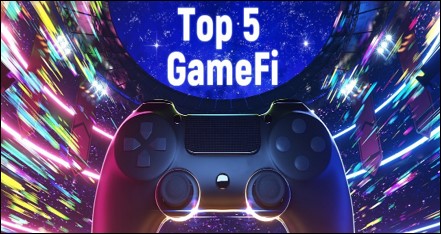
Axie Infinity is a blockchain-based game, and one of the best metaverse platforms introduced so far. The game was developed by a Vietnamese startup, Sky Mavis, and has gained significant popularity since its launch in 2018.
The game features small creatures called Axies, which players can breed, battle, and trade. An Axie is unique and can have various attributes, making them valuable as NFTs. Players can earn GameFi crypto in the form of Axie Infinity’s native token, AXS, by playing the game and participating in various activities such as battles, quests, and tournaments. AXS can be traded on various cryptocurrency exchanges.
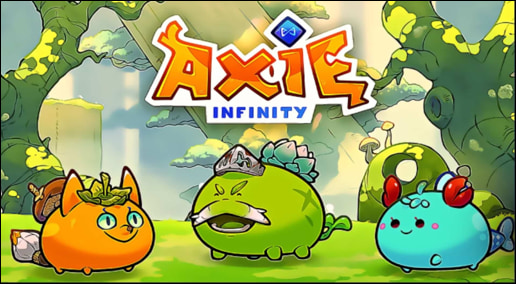
The game has gained a significant following due to its play-to-earn model, where players can earn a steady income by playing the game. This has particularly been popular in developing countries where traditional job opportunities may be scarce. Additionally, the game has a strong community that has created various tools and resources to help new players get started and succeed in the game.
Axie Infinity has been a significant contributor to the growth of the GameFi (game finance) industry. The game has demonstrated the potential for blockchain technology to create new business models in the gaming industry and has inspired other projects to explore the intersection of gaming, NFTs, and DeFi.
Mobox’s native GameFi token is MOBOX, an ERC-20 token used for staking, yield farming, and gaming. Players can earn MOBOX by playing games on the platform or participating in various staking and liquidity provision programs. The platform has a variety of games, including card games, RPGs, and arcade games.
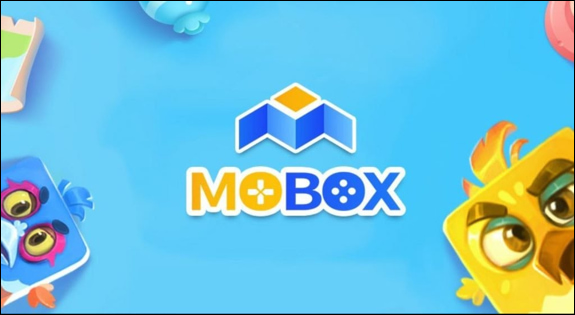
One of Mobox’s most popular games is HyperDragons, a multiplayer battle game where players collect and trade dragon NFTs. The game has a large and active community and regularly hosts events and tournaments.
Mobox is an innovative GameFi platform pushing the boundaries of what gaming can be. It offers players a new way to engage with games and earn real rewards. The GameFi space is still in its infancy, but Mobox is leading the way and showing the potential of this exciting new gaming category.
CryptoBlades is a blockchain-based GameFi game that combines gaming and finance, allowing players to earn GameFi crypto while playing. The game is built on the Binance Smart Chain, and the in-game items are represented by non-fungible tokens (NFTs), which can be bought, sold, and traded on various marketplaces.
In CryptoBlades, players become warriors who battle against each other to win rewards in SKILL tokens, the game’s native cryptocurrency. Players can earn SKILL tokens by winning battles, crafting and selling NFT items, or staking their NFTs in the game’s liquidity pool.
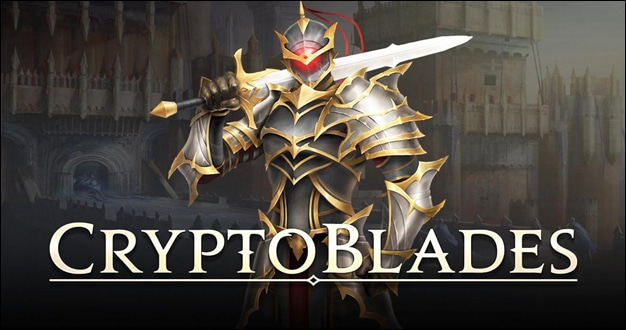
CryptoBlades is a unique blockchain-based GameFi game that offers an engaging gaming experience while allowing players to earn GameFi crypto and real-world income through NFTs. The game’s innovative model has captured the attention of many players and investors in the blockchain community, and it’s expected to continue to grow in popularity.
Sorare is a blockchain-based GameFi game that allows players to collect and trade digital collectable football cards. The game is based on Ethereum, and the cards are represented by non-fungible tokens (NFTs), which can be bought, sold, and traded on various marketplaces.
In Sorare, players can build virtual football teams by purchasing NFT cards featuring real-life football players. Each card is unique and has its own attributes and skills, which can impact the player’s performance in the game. Players can compete against each other in virtual matches, with the outcome determined by the stats of the players on each team.
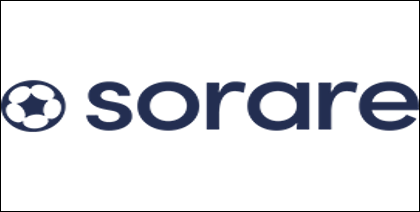
Sorare is a one-of-a-kind GameFi game that provides players with an engaging gaming experience while also allowing them to earn cryptocurrency through NFTs. The game has attracted a large community of football fans, and is steadily growing in popularity.
Gods Unchained is a digital collectable card game (CCG) that is also part of the fast-growing GameFi movement. In Gods Unchained, players collect and trade unique digital cards representing mythical creatures, heroes, and magical spells. Because the game is constructed on the Ethereum blockchain, all card ownership and transactions are immutable, transparent, and protected by smart contracts.
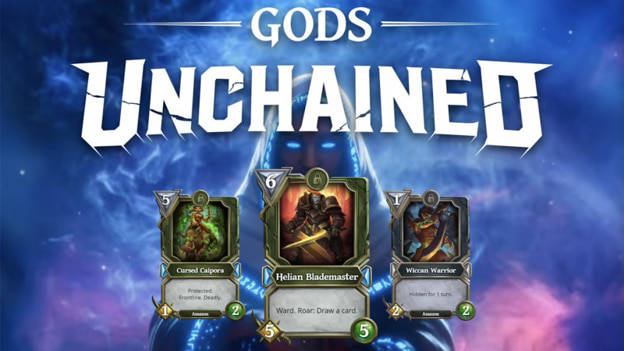
What sets Gods Unchained apart from other CCGs is its play-to-earn model. Players can earn GameFi crypto by winning matches, completing quests, and selling cards on the game’s marketplace. The game’s rarest cards can sell for quite a large sum, making it a potentially lucrative pursuit for skilled players.
Splinterlands is a GameFi game that combines the elements of collectable card games and role-playing games. The game is built on the Hive blockchain and allows players to collect, trade, and battle with their digital cards. Players can earn GameFi crypto rewards and sell their digital cards on various marketplaces.
The game has a fantasy-themed world where players must build a powerful team of creatures to fight against other players. Each creature has unique abilities and strengths, and players can strategically combine them to create a winning team. Players can participate in different game modes, such as single-player campaigns, multiplayer battles, and tournaments.
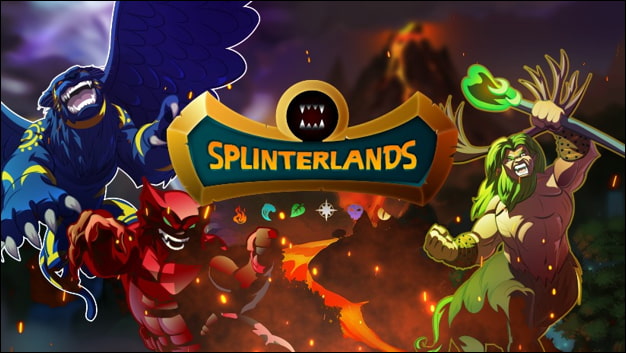
Splinterlands has gained popularity in the blockchain gaming community due to its play-to-earn model. Players can earn the game’s native GameFi crypto, Dark Energy Crystals (DEC), by completing quests, winning battles, and participating in tournaments. DEC can be used to purchase new cards or traded for other cryptocurrencies.
The game also has an active community that engages in social media and forums, discussing strategies, card combinations, and the game’s future development.
Splinterlands has attracted blockchain and gaming enthusiasts drawn to the game’s unique gameplay mechanics and rewards system. Overall, Splinterlands is an innovative and entertaining game that has the potential to revolutionize the gaming industry by combining blockchain technology with gaming.
We do hope this article gives you a good idea of ‘what is GameFi?’, ‘how does GameFi work?’, and some top GameFi games you can check out. GameFi is creating new opportunities for players to monetize their gaming experiences and fostering a more immersive and rewarding gaming environment. With the rise of blockchain and DeFi, GameFi is expected to continue growing in popularity and transform the gaming industry in the years to come.
GameFi can be considered one of the building blocks of the metaverse. Users can interact with real people and virtual items in the completely immersive and linked virtual environment known as the metaverse. GameFi, on the other hand, is a combination of gaming and decentralized finance that allows players to earn real-world rewards for their in-game activities.
GameFi can be integrated into the metaverse to create a more immersive and rewarding gaming experience, where players can not only play games but also earn money and participate in a virtual economy.
GameFi projects are blockchain-based gaming platforms that integrate decentralized finance (DeFi) mechanisms to create a new gaming experience. These projects allow players to earn GameFi crypto rewards for their in-game activities, which can be traded, staked, or used to purchase virtual items within the game. GameFi projects create a new economy within the gaming industry, where players can monetize their gaming experiences and participate in a decentralized financial system.
Some popular GameFi projects include Axie Infinity, The Sandbox, and Splinterlands, which have gained significant traction in the blockchain gaming community due to their unique gameplay mechanics and innovative reward systems.
DeFi and GameFi are two distinct concepts, although they share some similarities. DeFi refers to using blockchain technology and decentralized networks to create a new financial system that operates outside traditional banking systems. DeFi applications enable users to trade, lend, borrow, and stake cryptocurrencies and digital assets.
On the other hand, GameFi is the integration of DeFi mechanisms into gaming platforms, allowing players to earn cryptocurrency rewards for their in-game activities. GameFi projects create a new economy within the gaming industry, where players can monetize their gaming experiences and participate in a decentralized financial system. Therefore, while DeFi is focused on creating a new financial system, GameFi combines gaming and finance to create a new gaming experience.
Web 3.0 Main Features | Blockchain Layers Explained | Custodial Wallets Vs Non Custodial Wallets | DAO Guide | Blockchain Beyond Crypto | What is Chainlink | What are Cryptopunks | Advantages and Disadvantages of Decentralization | Peer to Peer Transaction | What is Phishing and How to Prevent it | What is Layer 1 Blockchain | What is a DDoS Attack | What are Soulbound Tokens | Best Blockchain Bridge | Layer 1 Crypto Projects 2022 | Sharding Types | Wrapped Tokens | Testnet Vs Mainnet | What is the Graph | CBDC Blockchain